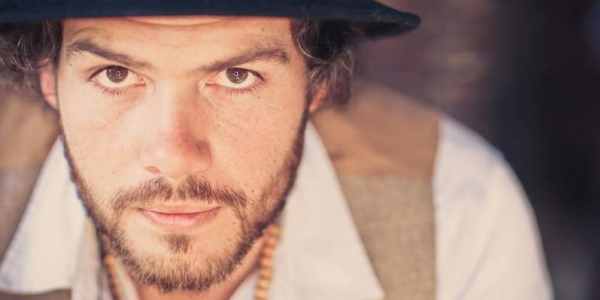Choreographer and performer Larissa McGowan has been working within the dance industry since 1997. From VCA student to Australian Dance Theatre regular, Helpmann awards and choreographing work on So You Think You Can Dance? McGowan has branched out on her in the past few years, following the creatively untethered and yet financially unreliable path of creating and presenting her own work on her own terms. Nearly 20 years of dance is bound to take some sort of toll, physically, but McGowan works hard at looking after her greatest asset. “I just make sure that I’m constantly giving my body some sort of attention,” McGowan says. “As long as you’re aware of what your body’s feeling you can kinda keep on top of it all. I love my massage, my physio and I’m also very much into doing a lot of stretching and yoga – so they’re the things that keep me going. But, yeah, with any kind of work there are gonna be moments that you don’t expect when your body decides to day ‘no’. I’m doing pretty alright though; I’ve maintained it well over these many years.”
These moments are themselves, a catalyst for Skeleton. What can the body handle? What can it not? “The drive for this piece, I guess, and following on from talking about the body, was that I’ve always had an interest in the anatomy of the body and I suppose in most of the works I’ve developed they seem to tap into some sort of bodily system,” she explains. “The exploration of that has led to pushing the body to its limits in some ways and to find new ways for a body to explore things that you wouldn’t expect a certain body type or build to do. That’s exciting because the audience gets to see something that they would stereotypically expect to see. On that topic as well, Skeleton really does explore the examination of the physical skeleton; the work is like an archeological puzzle exploring fantasies, memories and objects that make us who we are.”
After a premiere season a piece can undergo some hefty changes of the creators can relax knowing that they’re on the right path, so which one has it been for McGowan and Skeleton? “We were waiting for that moment to see the audience response – that’s when you know where the work is sitting – and the audience response has been really wonderful,” she says. “People seemed to be coming away both shocked and entertained by the design and choreographic elements together as well as the sound. It makes you really positive about the choices you’ve made with the team because everyone working on this is quite phenomenal.”
Working with a well-respected and established company like Australian Dance Theatre gives a strong grounding to an artist’s skills and creativity. It’s a fairly safe environment where other people can worry about the “how” of putting on a show while the dancers and choreographers can focus on what they do best. There are also some creative limitations and McGowan realised that it was time to go out on her own and after a successful grant application around 2010, she flew from the secure next of ADT.
“When I received the Triennial grant it was the added push that I needed to leave an established company like Australian Dance Theatre and be proactive with my own work under my own name,” she says. “With the guidance of Sam Haren, he is an amazing theatre director and we had worked together in some short works, well working with a dramaturg and director led to another level within my choreographic direction.”
Haren, co-director of Skeleton, was a muse of sorts for McGowan as this piece came together. “A lot of the influence for the work came through stimulus that Sam was feeding me. There were works from people like Ricky Swallow, an Australian sculptural artist, and Nick Veasey who does amazing X-ray photography and artwork, having all of that detail really enhanced where the project has gone. We found a great creative team and we really did chose people that we’d worked with before and who understood our drive.”
There is still a divide between traditional dance audiences searching for a virtuoso display of physical contortion and contemporary audiences yearning for something to be said via the medium of the body. It isn’t so much of a Berlin Wall but rather a subtle fence. Skeleton seems to be one of those contemporary pieces that is able to unite these differing ideas of what dance should be.
“Something like ballet is obviously narrative in form and contemporary is generally very abstract in form,” she says. “I do agree there is a divide but I think that this particular work, even though it may not be narrative in form, I think the audience really understands the subject matter and certain popular cultural moments in the work really invite the audience in. Once an audience understands the subject matter I think they really are comfortable about delving into an abstract piece. I think, or hope, that this is open to a really wide variety of people.”
BY KRISSI WEISS







